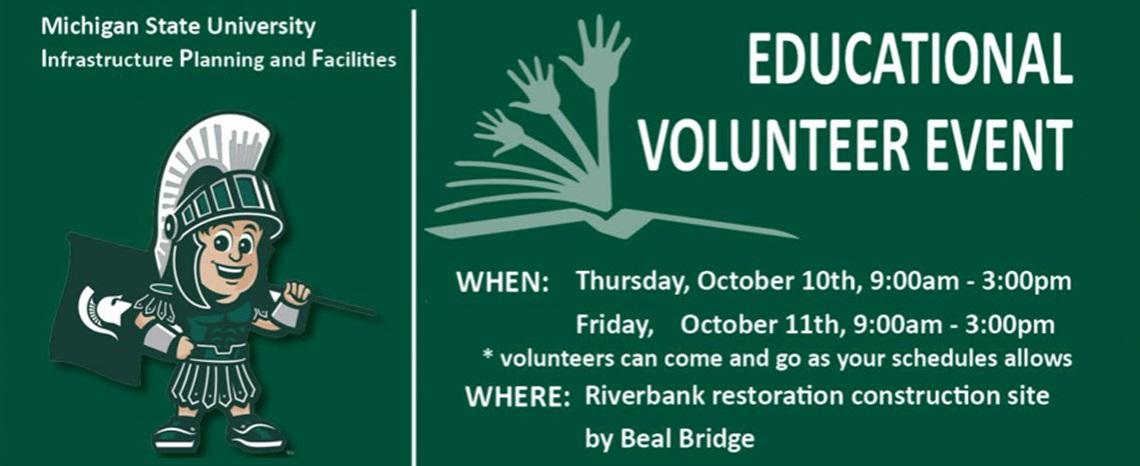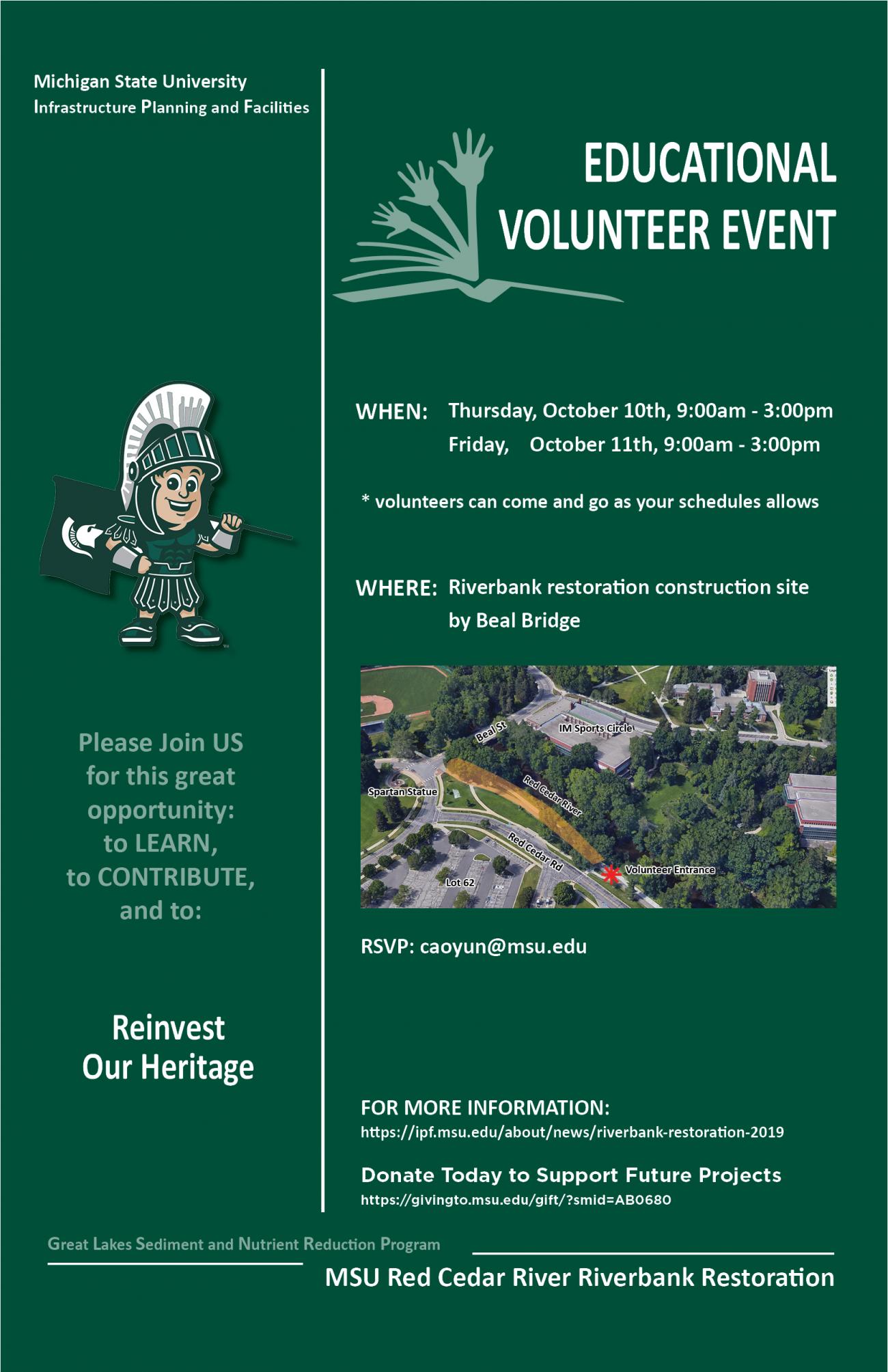Riverbank Restoration 2019

Fred Woodhams
September 16, 2019
MSU Red Cedar River Riverbank Restoration
Project Background Information:
About 3 miles of the Red Cedar River traverses campus, it is an iconic feature for the university. Not only is the river are considered one of the most enjoyable places for students, faculty, staff, and visitors, it is also a living/learning laboratory used for education and research. The Red Cedar River is also a thriving ecosystem supporting a variety of fish species and aquatic habitat. Most people see the beauty of the river, but few notice its degradation over time.
The natural process of erosion slowly impacts all riverbanks. For the Red Cedar River, this process has accelerated due to an increase in regional urbanization. Increased impervious area, loss of floodplain, and greater stormwater runoff exacerbate the riverbank erosion. Significant loss of riverbank soils causes tree root exposure, which can cause some trees to fall into the river. Riverbank erosion also causes excessive sedimentation and turbid water with every rainfall. The accelerated erosion can cause public safety hazards and negative impacts on the aquatic habitat, even to the Great Lakes Basin.
In 2018, MSU hired GEI Consultants to re-evaluate riverbank conditions building from the 2006 Hamilton Anderson Associates Study. The riverbanks were evaluated from the MSU Community Music School to West Brody Road and their condition categorized and prioritized.
IPF recently received the Great Lakes Sediment and Nutrient Reduction Program grant (GLSNRP). The primary focus of this grant is the reduction of sediment and nutrients into the Great Lakes and their tributaries Ideal GLSNRP projects demonstrate significant total phosphorus savings, while also controlling soil erosion and reducing sedimentation within the waterways of the Great Lakes Basin.
Project Information:
The restoration area that we picked for this project is along the walking and biking path adjacent to Spartan Stadium. In some areas the edge of pathway is only 3-5 feet from top of bank. With the erosion process impacting the riverbank, the toe of the slope has been undercut and tree roots are exposed creating potential falling hazard. Invasive species grow on the riverbank and they are out competing native species and altering aquatic habitats. The riverbank is in need of restoration.
Riverbank Restoration Process:
MSU and GEI Consultant propose to restore this stretch of the river by using Bioengineered Lifts. It will be constructed along approximately 275’ of the riverbank. This technique uses rock, natural materials, and native plants to rebuild the riverbank.
Project Milestone:
- Oct. 1, 2019 – Start Construction
- Oct. 10 & 11, 2019 – Educational Volunteer Event
- Oct. 25, 2019 – Ribbon Cutting Event
- Spring 2020 – Planting
MSU Red Cedar River: Reinvesting in our Heritage
Donate Today to Support Future Projects
View a printable project poster.
Register for the volunteer event here.

